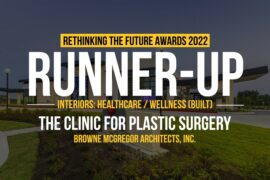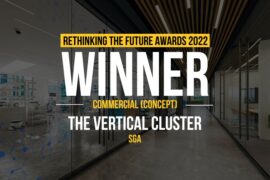First Award | Commercial
Project Info
Participant Name: Alison Freund
Country : United States
Details
A Playful Relief
Society today is one of routine, constant and continuous in pace. It’s a society dependent on predictability and reliant on legibility. Everyday design continually desires to prescribe and segregate program, rigidly defining use, and we now accept and desire this banality. This over prescription of space has led to the creation of non-space, spaces of transition, devoid of activity and occupation. Likewise the objectification of buildings appeals to visual stimulation rather than provide for intimate and habitable spaces, creating more non-space. The overabundance of non-place, and absorption in daily routine and predictability has created a society disengaged with their context.
Architecture has the potential to design for a creative and ludic environment, one that can begin to engage the everyday user, challenging the inhabitants understanding of what a building is and how to use it. Through a pliable and playful framework, it can allow spaces to be redefined by needs and desires, inspiring new states of mind and detaching the user from their everyday reality. Space can inspire a new relationship with the built environment, one of participation and ambiguity, open to be manipulated and creatively experienced.
We can look to the act and qualities of play, the desires it fulfills and the opportunities it creates. The act of world making, movement, and freedom can inspire and create new spaces, spaces that have been reappropriated, spaces that are responsive and public. Studying play and its relationship to society, its conflict, and the opportunities that arise from its implementation, spaces can become more empathetic to a ludic environment that can re imagine how one considers, responds, and experiences a space, allowing social interactions to thrive, routine to be interrupted, users to become spontaneously engaged. Architecture has an inherent ability to monumentalize in order to amplify effects, and can thus amplify the qualities of play within the public sphere, inviting in public participants, and engaging its surroundings.





